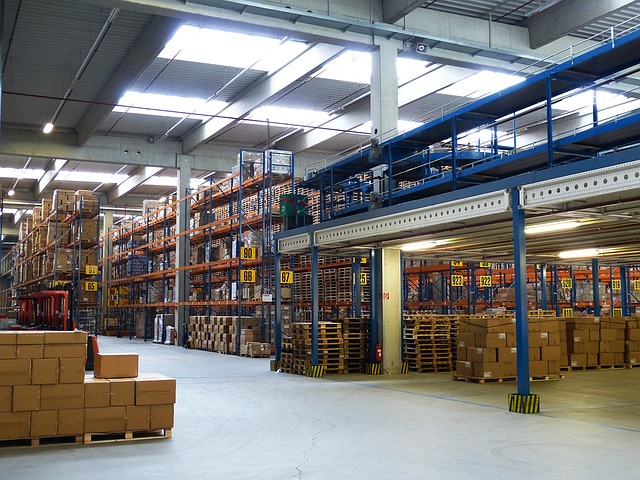- March 15, 2017
- Posted by: David Marshall
- Category: Business, Management, Manufacturing, Productivity

When I first started with Robroy, we needed an awful lot of cleanup, not only because the facility was dirty, but because there was a lot of nepotism in the organization that resulted in an awful lot of unproductive people working for us.
Nepotism is never a good idea in an organization, and we had family members who hired family members who hired family members who hired family members. I think the downside of that became very evident as I saw the results on the shop floor.
My job was to clean it up, find as many efficiencies as I could, and make the place profitable. I can attribute our success to three major decisions.
We Sped Up Communications

One of the first things I did was I started wandering around the operation to see what I could figure out. In addition to the initial cleanup — cleaning out filthy areas, organizing inventory, sweeping, cleaning and maintaining machines — I started looking for improvements to make.
As I started wandering, I noticed two people walking around the floor. When I asked what they were doing, they told me they were looking for a stepladder. The next day, I saw the same two people wandering, and they were looking for a screwdriver. (Why it took two people to look for one screwdriver, I’ll never know.)
It occurred to me that this was such a large facility, and that people walking around looking for something as simple as a stepladder or screwdriver showed a lack of ability to communicate quickly and accurately.
So I introduced two-way radios and gave one to every operator, supervisor, manager, and maintenance person. Thereafter, if you needed a stepladder, you could ask on the radio if anyone was near one. You could retrieve it in a matter of minutes, rather than two people spending two hours searching for one.
Of course, there was a downside to the radios too. My wanderings around the plant didn’t go unnoticed (or appreciated by everyone), and I learned that I had been given an alert code. Whenever I entered the facility, whoever spotted me first would get on the radio and ask, Do you have my keys?. Since everyone with a radio could hear the message, that was their code to straighten up and fly right because I was in the facility.
My ultimate goal was to get people to straighten up and fly right at all times, but it did make me a little happy to know they took me seriously enough that I got my own code!
We Eliminated 3rd Shift
I didn’t want to be one of those executives who only wandered the floor between 8:00 and 5:00, so I made sure I was randomly on the shop floor during the 2nd and 3rd shifts too.
I noticed right away that a large percentage of the 3rd shift associates were asleep when I showed up. And this was before I had introduced the 2-way radios, so nobody could send out a code to alert everyone that I was in the building.
So I very quickly shut the third shift down, and moved everything into two shifts.
Part of the problem was related to nepotism. Family members hired family members (and so on) and they would be placed in places where supervision would not be as visible or stringent as it should. Why? Because it was probably a cousin, aunt, uncle, significant other supervising their own family members.
But I was totally neutral where that was concerned. I believed in paying money for people to do their jobs.
Or as I liked to say, “the services should be rendered if the remuneration should be tendered.”
It’s no “if the glove does not fit, you must acquit,” I’ll grant you, but it sums up my solution to the problem nicely.
We were able to reduce the number of shifts by reducing the head count: the people who I found sleeping were gone, and the rest were moved to the second shift.
Finally, We Measured Productivity
Finally, I put systems into place that measured everything, both machine and associate output. I also reorganized the production floor so that all the material flowed in one direction instead of doubling back on itself. The idea was to touch everything only once.
With our different measuring systems in place, and our new workflow, we were able to create a baseline number for optimal productivity of each process and unit, and then measure our associates’ performance against that number.
If they failed to meet standards on a regular basis, we had to retrain them or let them go. It also weeded out the people who were lazy or didn’t want to work very hard.
This had a positive effect on company morale, because we were able to get rid of people who were slowing the company down. Most people in a company know who’s lazy and who isn’t. They know who’s pulling their weight and who’s letting everyone else shoulder their burden. And the good employees very rarely resent the company disciplining or firing someone who is lazy or underperforming.
In two or three years, I reduced the head count from 250 people on the floor to 140, and at the same time, we increased productivity by over 200 percent. We had fewer people producing more pieces, which saved us money in operational costs, but also increased revenue in our orders, and got us on our way to becoming a $XX million company.
I’ve been a manufacturing executive, as well as a sales and marketing professional, for a few decades. Now I help companies turn around their own business. If you would like more information, please visit my website and connect with me on Twitter or LinkedIn.
Photo credit: Falco (Pixabay, Creative Commons 0)

